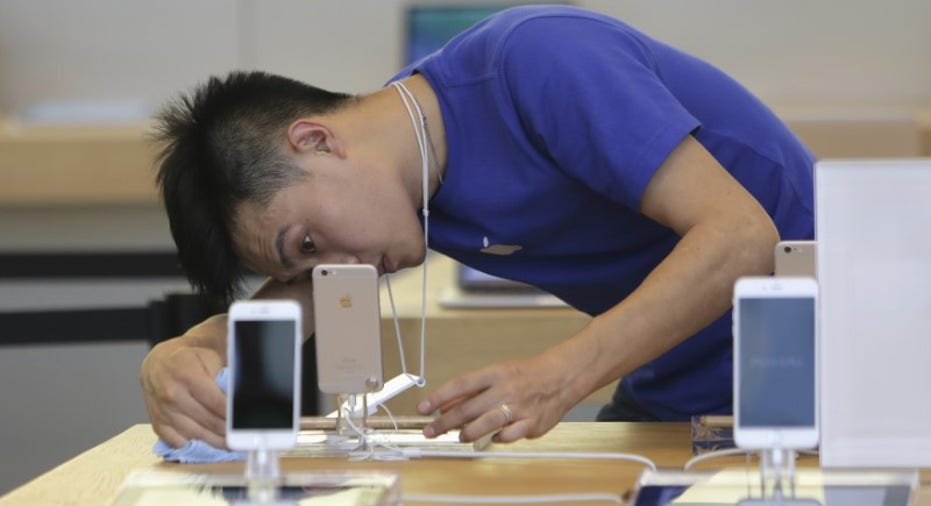China challenge for the iPhone X: Ending Apple's long sales slide

Apple Inc. (NASDAQ:AAPL) needs the new iPhone X to be a hit in China, where its sales have been slumping for years -- which means it needs more Shirley Wangs.
The 29-year-old hospital administrator says she won't be dissuaded by the base price of 8,388 yuan, or nearly $1,300, about $300 more than the phone will cost in the U.S.
"I'm a big fan of iPhones," said Ms. Wang, who was shopping near the Apple Store in Beijing's tony Sanlitun district Wednesday. "A lot of my friends will buy them, too."
But in a country where domestic smartphones start at about $100, that may not be enough. Even the two lower-priced models Apple is rolling out--the 5,888 yuan iPhone 8 and larger-screened 6,688 iPhone 8 Plus--are beyond reach of many Chinese consumers.
"It's too pricey," said Mo Jia, an analyst for market researcher Canalys.
Apple was at one time the top seller in China, the world's biggest smartphone market, and its brand still carries a matchless cachet for the status-conscious. But its market share has fallen to about 7%, from an estimated 16.5% in late 2014, as domestic rivals have made big technological strides--and offered models adapted to local tastes.
Still, greater China, which includes the mainland, Hong Kong and Taiwan, accounted for 22% of Apple's sales last year--trailing only the U.S. and Europe.
"China is hugely important, both in terms of its market size now and future growth," said Duncan Clark, founder of tech consultancy BDA China. "China is also a global test bed."
"What Apple really needs with the iPhone in China is two things," said Ian Fogg, a senior director at consulting firm IHS Markit: to offer something "demonstrably different" than Chinese makers, and to overcome the challenges of being an overseas brand.
The market leader in China is Shenzhen-based Huawei Technologies Co., whose share has doubled in the past three years, reaching 21% in the second quarter, according to Canalys. It is zeroing in on Apple's target high-end consumer. Earlier this year it launched its flagship P10 phone, which carries a price tag of nearly $700 and features that include an improved dual-lens camera developed in partnership with German camera maker Leica.
Coming next month: Huawei's Mate 10 smartphone, expected to have a new processor capable of photo-enhancing artificial intelligence and to offer faster charging and a longer battery life. A price hasn't yet been announced, though Huawei typically undercuts Apple.
China's Xiaomi Inc. on Monday introduced its costliest phone yet, the 4,000 yuan Mi Mix 2, featuring a full-screen display. Vivo, China's No. 3 smartphone maker, is set to launch its X20 full-screen phone later this year.
To win back Chinese market share, Apple tailored a number of features on its latest operating system to Chinese consumers--including a built-in ability to scan the country's ubiquitous QR codes, used to shop and send money across China. Users can also ask Siri to pull up their WeChat QR codes, used to connect with friends on the app. It also includes features like dictation in Shanghainese, and Chinese traffic cameras on Apple maps.
Apple also added the ability to use a phone number rather than an email address as Apple ID, after realizing how rarely email is used in China compared with texts and WeChat.
Notably, Apple is launching the ability for friends to pay each other on iMessage via Apple Pay in the U.S., but not in other markets. Apple Pay operates in China, but the mobile-payment market is dominated by domestic systems Alipay and WeChat Pay.
Whether Apple's efforts bear fruit won't be known for weeks, or even months. The two iPhone 8 models will go on sale Sept. 22, but the iPhone X--plagued by production difficulties this summer--won't hit shelves until Nov. 3.
Xia Giang, a 30-year-old startup founder, is taking a wait-and-see approach.
"Maybe I'll buy it," Mr. Xia said. "Money isn't an issue, but I want to know if my friends like it. I'll let them try it first and then decide."
By Dan Strumpf and Alyssa Abkowitz